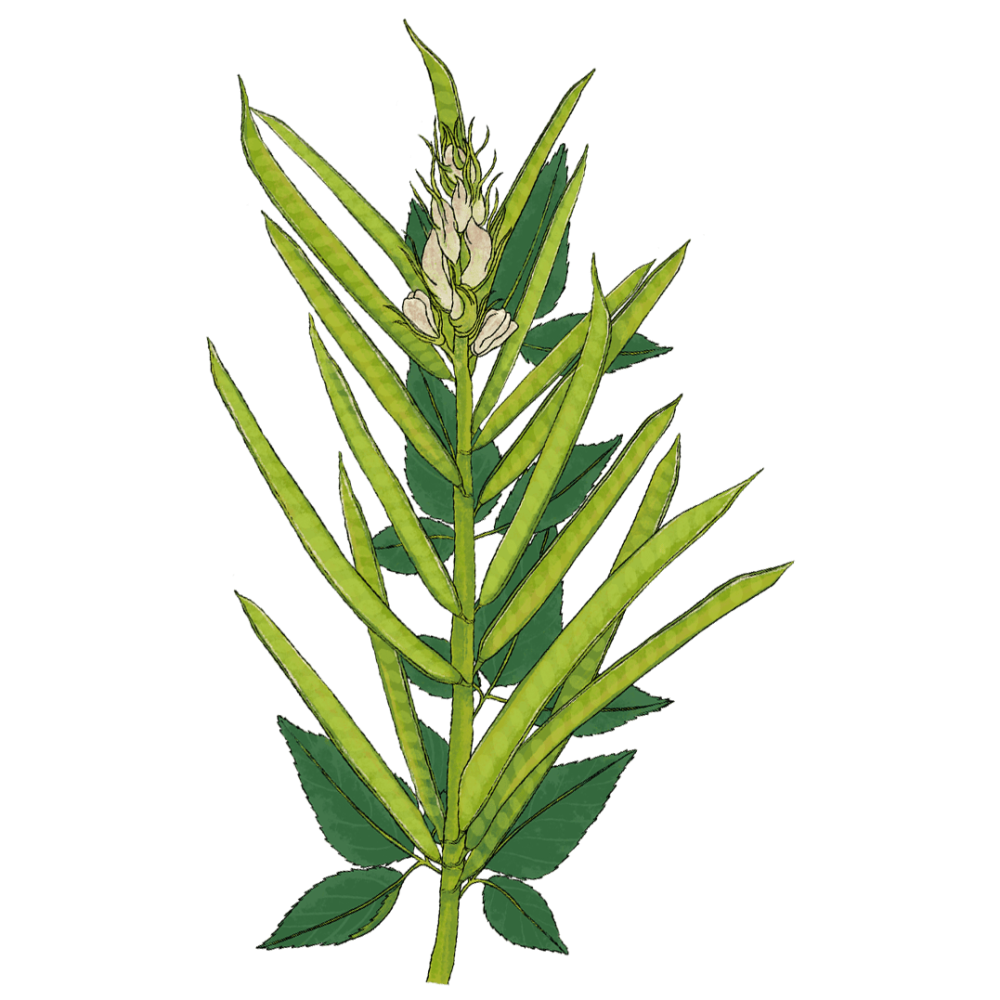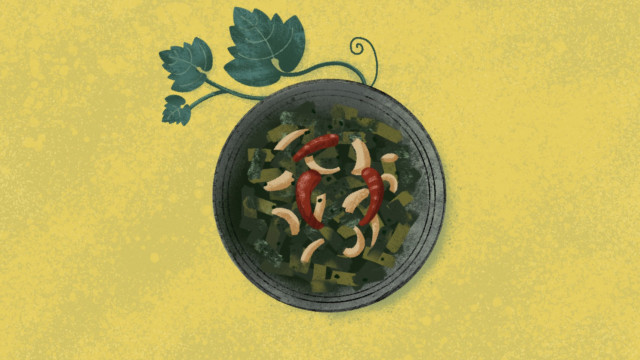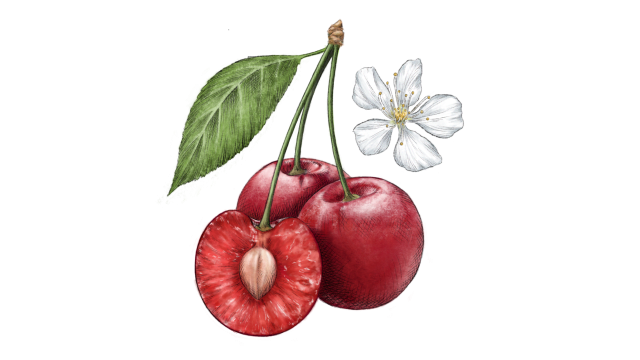Guar

Latin name: Cyamopsis tetragonoloba
Other names: Cluster beans, siame bean
Uses: vegetable
If you’ve ever eaten ice cream, processed cheese, or cold meats, chances are you’ve consumed guar — or more like an extract of its seeds known as guar gum, a gluten-free thickener and stabilizer. The name gaur comes from Sankrit words “gau” and “ahaar,” meaning cow and fodder, and encapsulates the bean stalk’s origin story. The beans were first cultivated in South Asia as cattle feed. In India and Pakistan, young green pods are a popular vegetable.
Why is guar healthy?
Tender guar pods are rich in dietary fiber and complex carbohydrates, known to help improve digestion and lower cholesterol and blood sugar. The pods also provide modest amounts of protein, calcium, iron, and vitamins A, D, and K.
What does guar taste like?
Guar beans taste earthy, grassy, and mildly bitter. Mature pods can be very fibrous.
Where does guar grow?
Around two-thirds of the world’s guar is grown in India, particularly in Rajasthan. Pakistan is another significant producer. Guar plants are drought-tolerant and love the sun, but are highly susceptible to frost. They are also grown in parts of the United States, Africa, and Australia for gaur gum, a commercially significant product.
How do I prepare guar and what do I pair it with?
Both the pods and tender young leaves are edible. Like most bean pods, cluster beans contain trypsin inhibitors, which prevent protein absorption by the body, so avoid eating them raw. The beans should be topped and tailed; in mature ones, remove the stringy fibers from the sides. Guar is typically steamed or stir-fried and pairs well with onions, garlic, and vegetables like bell peppers and potatoes. The leaves can be cooked and eaten like spinach.
In south India, guar pods are often stir-fried and sprinkled with grated coconut to make a poriyal, and in the north, they are sautéed with onion and tomato. They can also be steamed and added to lentil-based dishes, like sambar, or used in rice dishes like masala bhath. Toss them in a spicy chile-garlic paste for a Chinese-style stir fry or mash them with potato as in parts of Africa.
Surprising fact:
Industrial demand for guar often outstrips its supply. Guar gum, made from mature guar seeds, finds its way into all kinds of applications including textile, paper, petroleum extraction, and in recent times, even in manufacturing explosives.




